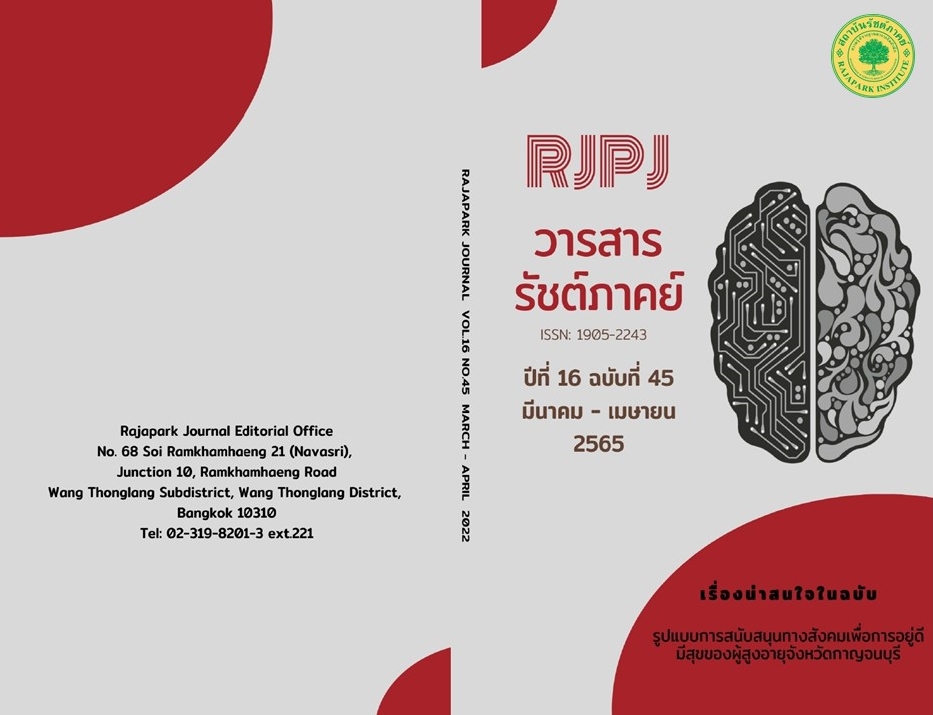Marketing Factors Affecting Japanese Restaurant’s Decision Making in Soi Sukhumvit 55 in Bangkok Metropolitan Area
Main Article Content
Abstract
This research aimed to study influencing factors and consumer behavior. This research used mixed methodologies, between quantitative and qualitative methods. The sample consisted of 395 Japanese restaurant consumers and was selected by convenience sampling between September and November 2019. And the qualitative method was used with two-restaurant entrepreneur interviews or the owner perceptions. The instruments were the questionnaires and interviews. The research results were found as follows: 1. Females were more likely to have Japanese food than males because it was low in fat and nutritious for the body. The advice for the Japanese restaurant operators was to do promotions that could attract females and would be successful marketing; 2. The main objectives of consumer behavior, they usually consume Japanese food at least 1-2 times per month on weekdays and weekends, from 06.01 - 08.00 pm, and have taken service for around 1 or 2 hours with 3-4 friends/colleagues. The decision-making order from the menu, as well as the promotion. They mostly paid 1,001-2,000 Baht each time by credit card and arrived by private transport; and 3. The marketing factors found that the first factor was the product. And the second one was the price. As for Japanese food consumption values, consumers mainly wanted to try the new food menu. Entrepreneurs in the Japanese restaurant business need to adjust their strategies, offer exotic foods to meet the needs of consumers, and attract more consumers to Japanese restaurants.
Article Details

This work is licensed under a Creative Commons Attribution-NonCommercial-NoDerivatives 4.0 International License.
Views and opinions appearing in the Journal it is the responsibility of the author of the article, and does not constitute the view and responsibility of the editorial team.
References
Best, J. W. (1981). Likert Method, Research in Education (4th ed.). Eaglewood Cliffs. N.S.: Prentice-Hall.
Boonsin, P. (2019). Factors Affecting Food Consumption Behavior through Fuji Japanese Restaurant in the Department Store in Bangkok Metropolitan Area(Independent Study). Silpakorn University.
Central Registration Office, Department of Provincial Administration, Ministry of Interior. (2020). Demographics in Thailand. Retrieved January 30, 2021, from http://www.bora.dopa.go.th/index.php/th/
Chaloemjirarat, W. (2015). Service Quality. Bangkok: Duagnkamol.
Charoenwiriyatham, N. (2018). Service Marketing Mix Factors Affecting Japanese Restaurant Service Choosing Decision of Consumer in the Department Store in Bangkok(Independent Study). Chiangmai University.
Dechakub, J. (2016). Service Psychology. Bangkok: Sukhothai Thammathirat Open University.
Feather, N. T. (2016). Value in Education and Society. New York: Collier Macmillan.
Gronroos. (2015). Service Management. Finland: Christian Grönroos Association.
Kasikorn Research Center. (2019). Japanese Restaurant Business. Retrieved October 25, 2019, from http://www.oknation.net/blog/print.php?id=25751.
Kasikorn Research Center. (2021). Japanese Restaurant Business in 2021. Retrieved January 5, 2021, from http://www.kasikornresearch.com/search_detail.jsp?id=9057&cid=5
Millet, J. D. (2014). Management in the Public Service. New York: McGraw-Hill.
Na-Nan, K., Juangtrakul, J., Sanamthong, A., & Pakkiri, P. (2014). Research Philosophy. Journal of Management and Marketing, Rajamangala University of Technology Thanyaburi, 1(2), 1-12.
Nochai, H. (2017). Consumer Behavior Through the Service of Japanese Restaurant in Chiangmai City(Independent Study). Chiangmai University.
Nuntapaibun, J. (2018). Service Psychology. Bangkok: SE-EDUCATION.
Nuthong, P. (2014). Choosing the Belt System Buffet Japanese Restaurant Service Through Consumer in Chiangmai City(Independent Study). Maejo University.
Raths, L. E., Harmon, M., & Simon, S.B. (1966). Value and Teaching. Columbus, Ohio; Charles E. Merrill Books.
Serirat, S. (2015). Consumer Behaviour (Revised ed.). Bangkok: Teerafilm & Si-Tech.
Serirat, S. (2019a). Marketing Strategy and Marketing Management. Bangkok: Thammasarn.
Serirat, S. (2019b). Modern Marketing Management (Revised ed.). Bangkok: Thammasarn.
Thansettakij. (2018). The Japanese Restaurant Business is still in Popularity. Retrieved May 15, 2019, from http://thannew.th.com/detaiINews.php?id=M2422141&issue=2381
Thansettakij. (2020). Japanese Restaurant Business in Thailand. Retrieved March 7, 2020, from
http://thannew.th.com/detaiINews.php?id=M2422341&issue=2794.
Yamane, T. (1967). Statistics: An Introductory Analysis (2nd ed.). New York: Harper and Row.


